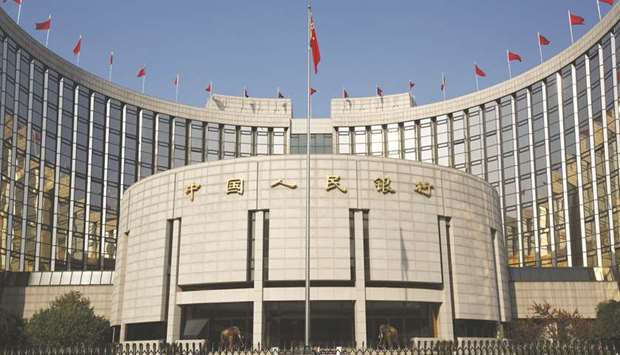The money and lending figures, along with trade data reported earlier yesterday, added to views that China’s economy has sustained solid growth momentum from late last year into early 2018, contrary to earlier expectations of a slight slowdown.
The financing data also suggested that authorities continue to make solid inroads in their campaign to clamp down on riskier lending practices and shadow banking without stunting economic growth.
Banks in China extended 1.12tn yuan ($178.23bn) in net new yuan loans in March, rebounding from the previous month but just below expectations, data from the People’s Bank of China showed yesterday.
China’s total social financing (TSF), which provides a much broader measure of credit and liquidity in the economy, rose to 1.33tn yuan in March from 1.17tn yuan in February.
For the quarter, bank lending rose 15% year-on-year, significantly higher than economic growth, though new credit overall (measured by TSF) added to the economy fell nearly 20% from the year-ago period in the midst of Beijing’s crackdown on risk.
“The higher share of new loans in aggregate financing reflects the shrinking of shadow banking on the back of the tightening regulation.
This is moving towards what the regulators would like to see,” said ANZ Senior China Economist Betty Wang.
TSF includes off-balance sheet forms of financing that exist outside the conventional bank lending system, such as initial public offerings, loans from trust companies and bond sales.
That can provide hints of activity in China’s vast and unregulated shadow banking sector and its inter-linkages with commercial financial institutions, which authorities have also been targeting.
Within TSF, there was a sharp jump in bond issuance and drops in entrusted loans, trust loans and bankers’ acceptances in March.
“The slowdown in broad credit growth that has been underway since mid-2016 showed no signs of abating last month,” Capital Economics Senior China Economist Julian Evans-Pritchard wrote in a note. Capital Economics said its own measure of broad credit growth in China declined from 12.9% to 12.1% in March, its slowest pace since 2006.
A pickup in bank loans amid a decline in overall credit growth indicates that more lending is coming from traditional bank loans, which are considered less risky than other forms of credit, an encouraging sign for China’s regulators.
Lending to non-financial corporations increased 16% in the first quarter to 3.06tn yuan. Last week, China’s banking and insurance regulator said the country would crack down firmly on shadow banking, and would seek to push banks to bring off-balance sheet assets onto their balance sheets to give regulators a better idea of their risk exposure. Outstanding total social financing increased 10.5% year-on-year in March, down from 11.2% growth in February. Analysts polled by Reuters had predicted new yuan loans of 1.2tn yuan, rebounding from February’s weaker-than-expected 839.3bn yuan.
China’s banks extended a record 13.53tn yuan in new loans last year, 7% more than the previous high in 2016.
After banks doled out a record 2.9tn yuan in new yuan loans in January, they came under pressure from regulators to rein in lending, financial magazine Caixin reported in February, citing banking sources.
Beijing is in the second year of a regulatory push to reduce risks to the financial system that have been fuelled by a rapid build-up in debt linked to stimulus campaigns.
While escalating US-China trade tensions pose a risk for economic growth, the threat has not reached a point where China is likely to change its monetary policy, the Bank of Communications said in a recent report.
Long-term household loans, mostly mortgages, rose to 377bn yuan in March from 322bn yuan in February, according to PBoC data. Overall new household loans totalled 580bn yuan, 52% of total new loans in March, versus 33% in February.
Broad M2 money supply grew 8.2% in March from a year earlier, missing forecasts for an expansion of 8.9% and compared with 8.8% in February.
Premier Li Keqiang said in his annual work report in March that he expected reasonable growth in broad M2 money supply and total social financing this year, without giving hard targets.

